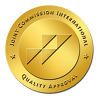What Are the Different Procedures Affecting Laser Eye Surgery Cost?
Laser eye surgery cost can vary based on the specific procedure chosen. Common approaches include LASIK (Laser-Assisted In Situ Keratomileusis), PRK (Photo-Refractive Keratectomy), SMILE (Small Incision Lenticule Extraction) and LASEK (Laser-Assisted Sub-Epithelial Keratectomy). Although all aim to correct refractive errors, they differ in technique and technology:
LASIK: This is often the most widely recognized method, involving the creation of a corneal flap that is lifted to reshape underlying tissue with an excimer laser. Some clinics use a femtosecond laser for a bladeless approach, which can affect overall pricing.
PRK and LASEK: These are sometimes referred to as "surface ablation" techniques. Instead of a flap, the outer corneal layer is removed or loosened before reshaping the cornea. In many places, these procedures are priced slightly lower than traditional LASIK, though the difference is usually modest.
SMILE: As one of the newer techniques, SMILE uses a femtosecond laser to create a disc of tissue (lenticule) within the cornea, which is then extracted through a small incision. Because it relies on advanced laser systems, some clinics may place a higher price tag on SMILE.
Which Factors Have the Biggest Impact on Laser Eye Surgery Cost?
Several interconnected elements shape laser eye surgery cost. While some differences come from technology or the surgeon's personal style, others stem from broader economic forces:
Clinics must invest in sophisticated lasers, imaging devices and diagnostic equipment to ensure accurate results and patient safety. Advanced femtosecond lasers for flap creation in LASIK or innovative technology for SMILE typically come with higher maintenance and acquisition costs. When a center prioritizes these premium systems, the more expenses can push up fees for each procedure.
Providers who are especially well-known or highly experienced may command higher prices, given their track record of success and the peace of mind they offer. Well-established clinics often rely on the trust of their existing patient base and reputation in the field. Conversely, newer surgeons or centers might lower fees to attract more patients, although skill is only one of many factors that decide outcomes.
Differences in pricing sometimes come from how clinics package their services. Some bundle all pre-operative exams, follow-up visits and potential enhancements in a single fee, while others quote a lower "base" price and then charge separately for these items. This variability can make it difficult for patients to compare quotes directly. Clarifying what the stated fee includes is vital before deciding on a clinic.
High-volume centers or large corporate chains often manage to reduce overhead through efficiencies. They might group surgeries on specific days, standardize supplies and minimize nonessential amenities. With lower operational costs per patient, they can pass a portion of these savings along. On the other hand, more boutique-style clinics offering premium services and individualized attention may charge more, reflecting higher expenses per patient.
Operating expenses, staff salaries, building rent and the cost of living in a specific region all have a strong bearing on what patients pay. City clinics in a country with steep rents and labor costs usually need to charge more. In contrast, providers in smaller towns or countries where wages and utilities are lower can offer the same procedure for less. Global variations in exchange rates further enhance these disparities.
How Does Laser Eye Surgery Cost Vary Globally?
Laser eye surgery cost differs dramatically around the world due to local market dynamics and economic realities. In higher-income countries, including those in North America, Western Europe or certain parts of East Asia, the cost of living and overhead expenses are generally high and this is reflected in steeper prices for elective procedures like LASIK, PRK or SMILE. Meanwhile, appearing economies and noted medical tourism destinations often offer more affordable treatment.
This disparity has led many individuals to explore care outside their home country, a phenomenon known as medical tourism. A person in a region where prices are high might find that traveling abroad—particularly to areas known for qualified physicians and modern facilities—can result in significant savings. Some of the most popular destinations for laser eye surgery include countries where operating expenses and exchange rates are favorable. As medical tourism becomes more common, clinics in these destinations often develop specialized services to assist international patients. This can involve:
- Arranging accommodations
- Providing interpreter services
- Streamlining surgery scheduling
- Offering comprehensive travel packages
While cost savings are a main incentive to travel, it's not the only consideration. Some people combine their surgery with a vacation or choose a provider abroad because of a surgeon's specific skill. Others find that clinics in certain countries have shorter wait times or more flexible scheduling than at home. Of course, a degree of caution is called for; ensuring that a facility meets proper accreditation and has reliable infection control and surgical standards is essential. Nevertheless, the trend persists, underscoring that global price differences can be substantial for an elective procedure like laser eye surgery.
What Options Exist to Manage Laser Eye Surgery Cost?
Given that many people pay for laser eye surgery themselves, a range of financing strategies and cost-smoothing tools have become common:
Clinics often partner with third-party financing companies or provide their own in-house plans. These can span several months or more, sometimes with low or zero interest during a promotional period. By paying monthly instead of in a single lump sum, patients can incorporate the expense into their regular budget.
Some prefer to charge the surgery to a general credit card with favorable rewards or low interest. Others might take out a personal loan or line of credit. Whichever route is chosen, it can be helpful to look for promotional rates to reduce the financing burden.
In certain countries, there are tax-advantaged accounts that allow people to set aside pre-tax earnings specifically for healthcare expenses. The precise details differ depending on local laws, but the general idea is that you can pay for eligible medical costs with untaxed funds, effectively saving on the final amount.
Clinics occasionally run special offers or seasonal deals. Some employers also collaborate with clinics to provide exclusive discounts to their staff. These can shave off a portion of the total fee or include package perks like extra follow-up visits at no more charge.
From a purely financial standpoint, laser eye surgery can eventually offset the recurring costs of glasses, contact lenses and related accessories. While the first investment may seem steep, the cumulative savings over many years can be substantial. That said, this long-term argument only helps if patients can afford the upfront outlay or can spread it out through financing.
What Is the Future Outlook for Laser Eye Surgery Cost?
Laser eye surgery has reached a level of safety and consistency that fosters growing interest among people looking for a permanent refractive solution. Cost, however, stays a significant hurdle. Multiple trends are worth watching:
Technological Evolution: As laser platforms evolve, some innovative devices may firstly raise procedure fees. Over time, though, when this technology becomes widely adopted and older machines retire, costs may stabilize or decrease.
Greater Market Competition: As more clinics worldwide adopt these procedures and as medical tourism continues, competitive pricing could become more common. In markets where demand is robust and many providers vie for patients, there is an incentive to keep fees at an attractive level.
Incremental Insurance Changes: Despite the rarity of comprehensive coverage, occasional small steps by insurance providers or vision plans might reduce out-of-pocket burdens for some people. Employers could also negotiate more favorable deals for their workforce.
Improved Financing Options: Lenders and clinics are likely to refine financing programs, making surgery more accessible to broader income brackets. This includes the possibility of longer repayment terms, lower interest rates and more flexible eligibility requirements.
Still, the global landscape will probably retain significant cost variations. People in regions where pricing stays high may turn more often to destinations offering affordability and reliability. Meanwhile, places like Turkey will likely continue developing their medical tourism infrastructure, highlighting their commitment to balancing cost and quality.













